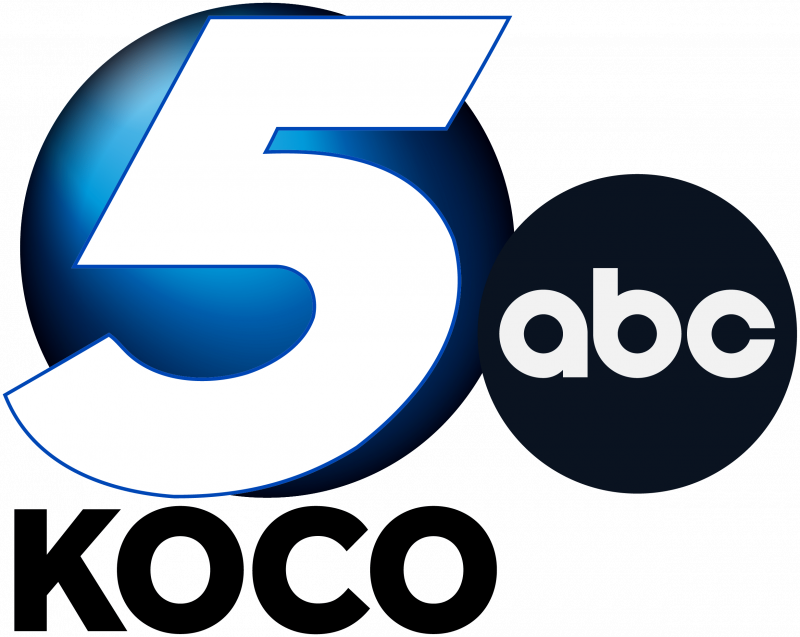KOCO-TV is a television station located in Oklahoma City, Oklahoma. It operates as an ABC affiliate and is owned by Hearst Television. The station's studios and transmitter are situated on East Britton Road, within the McCourry Heights neighborhood in northeast Oklahoma City. As a local television station, KOCO-TV provides news, entertainment, and other programming to viewers in the Oklahoma City area.
5 hours ago : Oklahoma Braces as Tornado-Warned Storms Approach, tracked by David Payne and KOCO-TV.
KOCO-TV reports fast-moving, tornado-warned storms are approaching Oklahoma. Meteorologist David Payne is tracking the severe weather, with hail and heavy rain expected. Residents are urged to stay informed and prepared for potential impact.
1948: Alfred Lee Whittle character developed for radio
In 1948, Tom Gilmore developed the Alfred Lee Whittle character for radio, which would later be featured in the KOCO-TV program 'Captain Tom's Popeye Theatre'.
June 6, 1949: WKY-TV signs on the air
On June 6, 1949, WKY-TV (now KFOR-TV) signed on the air. It was the first television station to sign on in the Oklahoma City market.
June 1949: WKY-TV airs ABC shows
From June 1949, WKY-TV aired select ABC shows under a secondary basic affiliation.
1949: Chronicle Builds and Signs On KRON-TV
In 1949, Chronicle Publishing Company built and signed on KRON-TV in the Bay Area.
July 1952: Enid Radiophone Company applies for channel 5 license
In July 1952, shortly after the FCC lifted a four-year moratorium on new television station license applications, the Enid Radiophone Company filed an application to obtain a construction permit and license to operate a television station on VHF channel 5.
October 28, 1953: KTVQ signs on the air
On October 28, 1953, KTVQ (channel 25, allocation now occupied by Fox affiliate KOKH-TV) signed on the air.
November 8, 1953: KLPR-TV signs on the air
On November 8, 1953, KLPR-TV (channel 19, allocation now occupied by Cornerstone Television affiliate KUOT-CD) signed on the air.
November 1953: KTVQ maintains ABC affiliation
From November 1953, fledgling UHF outlet KTVQ maintained a full-time primary affiliation with ABC.
December 20, 1953: KWTV signs on the air
On December 20, 1953, KWTV (channel 9) signed on the air.
February 11, 1954: FCC awards channel 5 license to George Streets
On February 11, 1954, the FCC awarded George Streets, owner of Streets Electronics Inc., and his ownership group the license and permit for VHF channel 5 in Enid, Oklahoma. Streets requested and received approval to assign KGEO-TV as the call letters for the television station.
July 2, 1954: Channel 5 Signed On as KGEO-TV
On July 2, 1954, Channel 5 began operations as Enid-based KGEO-TV, featuring a half-hour, weekday-only 12:30 p.m. newscast.
July 6, 1954: KGEO begins test broadcasts
On July 6, 1954, KGEO began test broadcasts. The station intended to debut on June 15, three weeks before test telecasts commenced.
January 11, 1955: Streets Electronics files permit for new transmission tower
On January 11, 1955, Streets Electronics filed a construction permit application to build a new 1,386-foot-tall tower in a rural area west-northwest of Crescent. This move aimed to migrate channel 5 into the larger Oklahoma City metropolitan area.
December 1955: KTVQ ceases operations
In December 1955, KTVQ ceased operations.
May 4, 1956: FCC grants permit change application
On May 4, 1956, the FCC granted the permit change application by Streets Electronics, subject to ensuring sufficient tower lighting and hazard markings. The agency also denied petitions from the DoD and WSLA regarding tower height issues.
August 1956: WKY-TV stops airing ABC shows
In August 1956, WKY-TV stopped airing ABC shows.
October 5, 1956: FCC hearing addresses NTA contract concerns
On October 5, 1956, an FCC hearing addressed KGEO management's concerns that some provisions of National Telefilm Associates (NTA)'s contracts with NTA Film affiliates violated FCC rules for chain broadcasters.
October 9, 1956: Enid broadcast tower collapses
On October 9, 1956, the Enid broadcast tower collapsed during relocation preparations for the new Crescent tower, causing an estimated $140,000 in damage. KGEO-TV briefly went off the air until setting up temporary transmitter facilities.
October 15, 1956: KGEO-TV affiliates with NTA Film Network
On October 15, 1956, KGEO-TV maintained a secondary affiliation with the NTA Film Network.
August 1957: KTVX moves from Muskogee to Tulsa
In August 1957, KTVX (now KTUL) moved from Muskogee to Tulsa. It was the first Oklahoma television station to transfer its license and operations to a larger, nearby city.
October 11, 1957: Streets Electronics sells KGEO-TV
On October 11, 1957, Streets Electronics sold KGEO-TV to the Caster-Robison Television Corporation for $950,000 plus the assumption of approximately $500,000 in debt.
March 1, 1958: KGEO-TV call letters changed to KOCO-TV
On March 1, 1958, the station's call letters were changed to KOCO-TV, to reflect its new secondary city of service.
March 5, 1958: Caster's interest transferred to his estate
On March 5, 1958, Caster's interest in Caster-Robison Television Corporation was transferred to his estate.
1958: Move to Oklahoma City
By 1958, after moving to Oklahoma City, the re-called KOCO was running a five-minute newscast at 6:25 p.m. and a half-hour newscast at 10 p.m. each weeknight.
1958: Ida Blackburn hosts Romper Room
In 1958, Ida Blackburn began hosting a local version of Romper Room for KOCO-TV.
March 1959: Ed Birchall's children's program debut
In March 1959, Ed Birchall started hosting a local children's show on KOCO-TV that would run for 29 years. The program, featuring Birchall as HoHo the Clown, included educational and entertainment segments.
May 15, 1960: Death of Louis E. Caster
On May 15, 1960, Louis E. Caster died due to a heart attack.
1960: Ida Blackburn ends Romper Room
In 1960, Ida Blackburn ended her run as the host of a local version of Romper Room for KOCO-TV.
May 1961: KOCO sold to Cimarron Television Corporation
In May 1961, Caster-Robison Television sold KOCO to the Cimarron Television Corporation for $3 million.
May 1961: FCC Denies Waiver of Identification Rules
In May 1961, the FCC denied KOCO's request for a waiver of station identification rules to identify as an Enid-Oklahoma City station on-air and in license documents.
November 1961: KGEO becomes exclusive ABC affiliate
In November 1961, Channel 5 became an exclusive ABC affiliate when National Telefilm Associates discontinued the NTA Film Network service.
1963: FCC Grants KOCO Permission to Shift Channel Allocation
In 1963, the FCC twice voted against relocating short-spaced VHF channels into several proposed markets, but granted permission for KOCO's channel allocation to be shifted to Oklahoma City. However, KOCO had to observe standard mileage separation requirements to limit interference and maintain an auxiliary studio in Enid.
March 1964: Channel 5 moves transmitter to Oklahoma City
In March 1964, channel 5 moved its transmitter facilities to a 1,563-foot tower on East Britton Road in northeast Oklahoma City.
1964: Newscast Format Changes
By 1964, KOCO was running half-hour newscasts at 5:30 p.m. weeknights and at 10 p.m. seven nights a week.
September 1965: Premiere of Sundayscope
From September 1965, KOCO produced "Sundayscope", a Sunday evening news and features program, which also featured a regular viewer mail segment hosted by general manager Ben K. West.
1968: Reformatting of Weeknight Newscasts
In 1968, KOCO's weeknight newscasts were reformatted as "The Hickox-Halburnt Report", anchored by Richard Hickox and Joe Halburnt Jr.
November 1969: Cimarron Television Announces Sale of KOCO-TV
In November 1969, Cimarron Television announced that it would sell KOCO-TV to Combined Communications Corporation (CCC) for $6.5 million.
July 17, 1970: FCC Approves Sale of KOCO-TV to CCC
On July 17, 1970, the FCC approved the sale of KOCO-TV to Combined Communications Corporation.
September 1970: End of Sundayscope
In September 1970, KOCO ended its production of Sundayscope, a Sunday evening news and features program.
1970: Joyce Jackson-Combs joined KOCO
In 1970, Joyce Jackson-Combs began working at KOCO as a clerical assistant.
1971: Dean Swanson Replaced Hickox and Halburnt
In 1971, Dean Swanson replaced Richard Hickox and Joe Halburnt Jr., and the newscasts were retitled "The News on 5".
September 1972: Newscast Airing Time at 5:30 PM
In September 1972, KOCO started airing the early-evening newscast at 5:30 p.m., instead of the 6 p.m. timeslot. This followed ABC's initial 5 p.m. Central Time feed of the ABC Evening News.
July 1973: Coverage of Oklahoma State Penitentiary Riot
In July 1973, KOCO provided live and filmed coverage of a riot at the Oklahoma State Penitentiary in McAlester, which was compiled into a one-hour documentary.
1973: Ben Tipton Joined KOCO
In 1973, Ben Tipton joined KOCO as the station's first African American on-air personality and the first black news anchor in the Oklahoma City market.
1974: Newscasts Renamed to Channel 5 Eyewitness News
In 1974, KOCO-TV renamed its newscasts to "Channel 5 Eyewitness News".
September 1976: WXIA-TV identifies as '11 Alive'
In September 1976, Atlanta sister station WXIA-TV began identifying as "11 Alive", using a logo similar to KOCO's.
February 1977: KOCO Adopts "5 Alive" Branding
In February 1977, KOCO adopted the "5 Alive" on-air branding, part of Combined Communications' rollout of the "Alive" concept.
March 31, 1977: Washington Star Communications Announces Exchange of WMAL-TV for KOCO-TV
On March 31, 1977, Washington Star Communications announced that it would sell WMAL-TV to Combined Communications in exchange for KOCO-TV and $65 million in stock.
1977: Ben Tipton Left KOCO
In 1977, Ben Tipton left KOCO to become the Ward 7 councilman on the Oklahoma City Council.
1977: Airing of "Wednesday's Child"
In 1977, KOCO began airing "Wednesday's Child", a weekly segment on its 10 p.m. newscast, presented by Jack Bowen, which profiled children in need of adoptive families.
January 1978: FCC Initially Approves WJLA-KOCO Trade
In January 1978, the FCC initially approved the trade of WJLA-TV for KOCO-TV between Washington Star Communications and Combined Communications.
February 3, 1978: Star Communications Sells The Washington Star to Time Inc.
On February 3, 1978, Star Communications sold The Washington Star to Time Inc. for $20 million plus debt assumption.
February 1978: Acquisition of "Sky 5"
In February 1978, KOCO acquired an Aerospatiale Astar 350, branded as "Sky 5", becoming the first station in the Oklahoma City market to use a helicopter for aerial newsgathering.
May 9, 1978: Gannett Announces Purchase of Combined Communications
On May 9, 1978, Gannett Company announced it would purchase Combined Communications for $370 million in stock.
September 1978: KOCO airs All My Children on a day-behind basis
In September 1978, after debuting a noon newscast, KOCO aired All My Children on a day-behind basis at 11 a.m.
1978: Seattle SuperSonics' previous NBA Finals appearance
In 1978, The Seattle SuperSonics appeared in the NBA Finals.
January 1979: Deadline for Star Communications to Divest Media Properties
January 1979 was the deadline for Star Communications to divest itself of all but one of its D.C.-area media properties, according to FCC rules.
June 7, 1979: Gannett Completes Purchase of Combined Communications
On June 7, 1979, the boards of Gannett and Combined Communications consummated the purchase transaction.
June 1979: Arrest of KOCO Reporters
In June 1979, KOCO anchor/reporter Ron Stahl and photographer Bill Collard were arrested for trespassing while covering a protest against the construction of a nuclear power plant in Inola. They crossed a utility fence to cover the protest.
September 1979: Premiere of Saturday Review
From September 1979, Joyce Jackson-Combs hosted "Saturday Review", a weekly public affairs program focusing on community events and topical discussions focusing on Oklahoma's African-American community that aired on channel 5 under various titles.
1979: Seattle SuperSonics' previous NBA Finals appearance
In 1979, The Seattle SuperSonics appeared in the NBA Finals.
January 1980: Conviction of Reporters
In January 1980, KOCO anchor/reporter Ron Stahl and photographer Bill Collard, along with other reporters, were convicted and fined $25 each for trespassing during a protest coverage in June 1979.
1980: KOCO Relocates to New Studio Facility
In 1980, KOCO relocated its operations to a newly constructed studio facility on Britton Road.
September 1981: KOCO Offers All-Night Classic Film Block
From September 1981, KOCO offered an all-night classic film block, until it resumed signing off on weekends in September 1987.
1981: KOCO Holds '5 Who Care Awards'
From 1981, KOCO held the annual "5 Who Care Awards" telecast recognizing public service contributions.
1981: Collaboration with ABC News on "Throwaway Kids"
In 1981, KOCO collaborated with ABC News' 20/20 on the undercover investigative report "Throwaway Kids", which investigated abuse and neglect of children, elderly, and mentally ill persons in the care of the Oklahoma Department of Human Services.
January 1982: WCVB-TV Debuts Chronicle
In January 1982, Boston sister station WCVB-TV debuted Chronicle, a half-hour weeknightly newsmagazine.
May 31, 1982: Shift of Early-Evening Newscast to 5 PM
On May 31, 1982, KOCO shifted its early-evening newscast to 5 p.m. and retitled it Live at Five. The newscast had been airing at 5:30 p.m. since September 1972. This change was influenced by ABC's requirement for affiliates to swap airtimes with World News Tonight.
September 1982: Attempted Telecast of Sooners-Trojans Game
In September 1982, the University of Oklahoma sold KOCO-TV the local television rights to a game between the Sooners and the USC Trojans; however, the effort was abandoned due to a court's delay in acting on the case and time constraints.
September 25, 1982: Gannett Announces Sale of KOCO to Chronicle Publishing
On September 25, 1982, Gannett announced it would sell KOCO to Chronicle Publishing for $100 million in exchange for KRON-TV.
May 1983: KOCO-TV affiliate of Children's Miracle Network Telethon
In May 1983, KOCO-TV became the Oklahoma City affiliate of the Children's Miracle Network Telethon.
September 12, 1983: Adoption of Newscope Format
On September 12, 1983, KOCO's 5 p.m. newscast adopted the Newscope format, a syndicated news concept featuring local perspectives on national and international news.
September 28, 1983: Chronicle and Gannett Terminate Sale Agreement
On September 28, 1983, Chronicle and Gannett mutually agreed to terminate the sale agreement, with Chronicle deciding to retain KRON-TV.
1983: KOCO seeks permission to further delay Nightline
In the summer of 1983, KOCO station management sought ABC's permission to further delay Nightline by 90 minutes, so it could air Thicke of the Night after M*A*S*H.
January 1984: Newscast Renamed and Defamation Lawsuit
In January 1984, KOCO's newscasts were shortened from 5 Alive NewsCenter to 5 Alive News. Also in 1984, the station was sued for defamation by local OB-GYN William Crittendon over a misquoted expert witness in a medical malpractice report.
January 1984: Supreme Court Declines Appeal
In January 1984, the Supreme Court declined to review the appeal against the convictions of KOCO anchor/reporter Ron Stahl and other reporters, upholding the convictions for trespassing during a protest coverage in June 1979.
April 1984: KOCO resumes airing Nightline on a one-hour delay
In April 1984, KOCO received permission to resume airing Nightline on a one-hour delay.
September 1984: Cancellation of Daybreak
In September 1984, KOCO canceled Daybreak, a two-year-old program.
September 1984: Discontinuation of Newscope and Staffing Changes
In September 1984, KOCO reformatted the 5 p.m. show as a traditional local newscast after Newscope was discontinued nationally. Massive staffing changes also took place during 1984, leading to several anchors leaving or not having their contracts renewed.
1984: Acquisition of Local Rights to College Football Games
In 1984, after NCAA regulations restricting the number of college football games that could be televised live were overturned, KOCO acquired the local rights to a Katz Sports-syndicated package of college football games involving Big Eight Conference teams.
September 5, 1985: Gannett Announces Purchase of Evening News Association
On September 5, 1985, Gannett announced that it would purchase the Evening News Association for $717 million.
November 15, 1985: Gannett Sells KTVY to Knight Ridder
On November 15, 1985, Gannett chose to keep KOCO and sold KTVY, along with other stations, to Knight Ridder Broadcasting for $160 million.
1985: Sale of College Football Rights
After the 1985 NCAA Division I college football season, Katz sold the rights to the college football games and certain other sports events to Raycom Sports.
February 1986: Completion of Knight-Ridder Transaction
In February 1986, the Knight-Ridder transaction, in which Gannett sold KTVY, was completed, one month after the KTVY sale was finalized.
1986: WLKY discontinues use of the 'Alive' moniker
In 1986, WLKY in Louisville, Kentucky, discontinued use of the "Alive" moniker.
August 3, 1987: Debut of Good Morning Oklahoma
On August 3, 1987, KOCO debuted Good Morning Oklahoma, a new hour-long weekday news and features program, marking the station's return to morning news.
September 1987: KOCO Resumes Weekend Sign-Offs
In September 1987, KOCO resumed signing off on weekends, after having offered an all-night classic film block since September 1981.
1987: Preemption of ABC's Saturday Morning Lineup
In 1987, KOCO-TV Channel 5 preempted portions of ABC's Saturday morning lineup, including "The Bugs Bunny and Tweety Show" and "Ewoks", in favor of the local real estate program "Home Showcase".
July 1988: Death of Ed Birchall
In July 1988, Ed Birchall, the host of KOCO-TV's long-running children's program, passed away after battling advanced-stage cancer. A memorial service was broadcast on several local stations.
September 2, 1988: Premiere of Prep Sports Extra
On September 2, 1988, KOCO premiered Prep Sports Extra, a Friday night program covering high school football games.
September 1988: Debut of Challenge [Bowl]
In September 1988, KOCO debuted Challenge [Bowl], a local academic quiz show.
December 1988: End of Ryan's Hope
In December 1988, the ABC soap opera Ryan's Hope ended, affecting KOCO's programming schedule.
1988: Beverly Glover Succeeded Jackson-Combs
In 1988, Beverly Glover succeeded Joyce Jackson-Combs as public service director.
March 1989: Termination of Saturday Review
In March 1989, "Saturday Review", a weekly public affairs program focusing on community events and topical discussions focusing on Oklahoma's African-American community that aired on channel 5 under various titles ended.
1989: KOCO expands community outreach initiatives
In 1989, KOCO expanded upon community outreach initiatives, with the creation of the "Kids Who Care Awards" and the "Project Challenge" campaign, including the "Oklahoma's Best" honors for academic excellence.
May 14, 1990: KOCO Begins 24-Hour Programming Schedule
On May 14, 1990, KOCO began maintaining a 24-hour-a-day programming schedule, adding syndicated programming, infomercials, and local news updates.
July 1990: 5 Alive WeatherTrack Launched
In July 1990, KOCO launched "5 Alive WeatherTrack" (later known as "WeatherPhone 5"), a toll phone service providing local and worldwide weather information.
September 1990: KOCO replaces Loving with Home
In September 1990, KOCO replaced Loving with the hour-long version of Home.
November 1990: KFOR Changes Slogan
In November 1990, KFOR changed its slogan to reference its use of the "24-Hour News Source" format obliquely.
September 1991: Hollywood Spotlight Premieres
In September 1991, KOCO premiered Hollywood Spotlight, a movie review and interview program hosted by entertainment reporter Dino Lalli.
December 27, 1991: KOCO Resumes Daily Overnight Sign-offs
On December 27, 1991, KOCO resumed daily overnight sign-offs, after having maintained a 24-hour-a-day programming schedule since May 14, 1990.
April 9, 1992: First Pix Unveiled
On April 9, 1992, KOCO unveiled "First Pix" to transmit photographs of a tornado.
April 1992: Preemption of ABC's Saturday Morning Lineup
In April 1992, KOCO-TV Channel 5 preempted all but 90 minutes of ABC's four-hour Saturday morning lineup, to accommodate a local Saturday morning newscast and other syndicated programming.
April 18, 1992: Debut of Saturday Morning Newscast
On April 18, 1992, KOCO debuted a three-hour-long Saturday morning newscast, the first local newscast in the Oklahoma City market to be offered on weekend mornings.
May 1992: Debut of Hot Country Hits
In May 1992, KOCO debuted Hot Country Hits, a music video program.
August 1992: Mike Morgan Leaves KOCO
In August 1992, Mike Morgan left KOCO to become chief meteorologist at KFOR-TV.
September 1992: ABC Daytime shows are ceded to ABC's affiliates
In September 1992, ABC Daytime shows were ceded to ABC's affiliates, ending KOCO's practice of airing All My Children on a day-behind basis.
September 1992: Wheel of Fortune Moves to KOCO
In September 1992, Wheel of Fortune moved to KOCO from KWTV.
1992: Carriage of Oklahoma City Cavalry Games
From 1992, KOCO carried select basketball games involving the Oklahoma City Cavalry, a now-defunct Continental Basketball Association (CBA) franchise.
1992: KOKH held the local rights to the Sooners magazine programs
In 1992, Fox affiliate KOKH held the local rights to the Sooners magazine programs, with KOCO carrying select Oklahoma State Cowboys programs such as analysis program The Pat Jones Show in the interim.
1992: Aired "Far and Away" instead of "Saving Private Ryan"
In 1992, KOCO aired the film "Far and Away" as a substitute programming.
April 1993: KOCO Disseminates Live Storm Footage Using Night Vision Technology
In April 1993, KOCO became the first station in the United States to disseminate live storm footage utilizing night vision technology.
November 1993: End of Oklahoma Collage
In November 1993, "Oklahoma Collage", a weekly public affairs program focusing on community events and topical discussions focusing on Oklahoma's African-American community was cancelled by KOCO station management.
November 28, 1993: KOCO Permanently Institutes 24-Hour Schedule
On November 28, 1993, KOCO permanently instituted a 24-hour schedule, offering ABC's World News Now and an all-night classic film block on Fridays and Saturdays.
1993: Music Video Programs for KOCO
In 1993, Brothers Butch and Ben McCain also hosted two music video programs for KOCO, Chartbusters.
1993: Tom Kirby Resigned
In 1993, Tom Kirby resigned from KOCO-TV to pursue consulting work.
May 1994: Ben and Butch McCain Pulled from Good Morning Oklahoma
In May 1994, Ben and Butch McCain were removed from Good Morning Oklahoma after KOCO decided to switch its morning show to a conventional news format.
May 1994: Cancellation of Hot Country Hits
In May 1994, KOCO cancelled Hot Country Hits, a music video program.
May 1994: KOCO Drops "5 Alive" Moniker
In May 1994, KOCO dropped the "5 Alive" moniker from general promotional use, in conjunction with the debut of a new logo and on-air graphics.
September 4, 1994: Sports Final Debuts
On September 4, 1994, Sports Final, a sports wrap-up program, debuted on KOCO.
September 1994: KOCO expands midday newscast
After September 1994, KOCO expanded its midday newscast, preempting ABC's half-hour soap operas.
September 1994: Cancellation of Challenge [Bowl]
In September 1994, KOCO cancelled Challenge [Bowl], a local academic quiz show.
1994: Carriage of Oklahoma City Cavalry Games ended
In 1994, KOCO stopped carrying select basketball games involving the Oklahoma City Cavalry, a now-defunct Continental Basketball Association (CBA) franchise.
1994: Rick Mitchell becomes chief meteorologist
In 1994, Rick Mitchell took over as chief meteorologist at KOCO.
February 1995: KOCO Rebrands with New "Circle 5" Logo
In February 1995, KOCO rebranded with the current "circle 5" logo, following a subsequent rebranding.
July 24, 1995: Gannett Announces Agreement to Acquire Multimedia, Inc.
On July 24, 1995, Gannett announced that it had entered into an agreement to acquire Multimedia, Inc. for $1.7 billion, plus $539 million in long-term debt.
September 9, 1995: Saturday Morning Newscast Time Shift
On September 9, 1995, KOCO's Saturday morning newscast, then reduced to two hours, shifted to 8 a.m.
September 11, 1995: Expansion of Noon Newscast
On September 11, 1995, KOCO expanded the noon newscast to one hour.
September 1995: KOCO shifts Nightline to its network slot
In September 1995, KOCO shifted Nightline to its network slot. Politically Incorrect with Bill Maher aired on a half-hour delay.
November 1995: Jack Bowen Departs for KOKH
In November 1995, Jack Bowen left KOCO to become the co-anchor of the then-soon-to-launch 9 p.m. newscast at Fox affiliate KOKH.
November 1995: FCC Approves Gannett-Multimedia Merger with Stipulations
In late November 1995, the FCC approved the merger of Gannett and Multimedia, stipulating that Gannett would have to sell KOCO and WLWT due to cross-ownership regulations.
December 4, 1995: Finalization of Gannett's Acquisition of Multimedia
On December 4, 1995, the sale of Multimedia to Gannett was finalized, marking a significant consolidation in the media landscape.
1995: Closure of Enid News Bureau
In 1995, KOCO station management closed the news bureau at its original Randolph Street facility in Enid.
1995: Introduction of the "circle 5" logo
In 1995, under Gannett ownership, the "circle 5" logo was introduced at KOCO.
May 1996: KOKH-TV Debuts Newscast
In May 1996, KOKH-TV debuted its local prime time newscast in Oklahoma City.
September 1996: McCains File Wrongful Termination Lawsuit
In September 1996, Ben and Butch McCain filed a wrongful termination lawsuit against KOCO, stemming from their firing.
September 1996: Delay of ABC Children's Programs
In September 1996, KOCO-TV Channel 5 began airing ABC children's programs meant to air during the 10 a.m. hour on a one-week delay at 7 a.m., while airing the remaining two hours in pattern from the ABC off-air feed.
November 20, 1996: Gannett to sell KOCO-TV to Argyle Television Holdings II
On November 20, 1996, Gannett announced it would sell KOCO-TV and WLWT to Argyle Television Holdings II for $20 million, in exchange for WZZM in Grand Rapids, Michigan, and WGRZ in Buffalo, New York.
December 1996: Deadline for Gannett to Divest Multimedia Cablevision or KOCO-TV
Gannett was granted a waiver until December 1996 to divest itself of either Multimedia Cablevision or KOCO-TV, due to FCC rules prohibiting owning both a broadcast television station and a cable provider in the same market.
1996: Seattle SuperSonics' previous NBA Finals appearance
In 1996, The Seattle SuperSonics appeared in the NBA Finals.
January 27, 1997: FCC approves sale of KOCO-TV to Argyle Television
On January 27, 1997, the FCC approved the sale of KOCO-TV from Gannett to Argyle Television Holdings II. This sale required Gannett to sell the Niagara Gazette to alleviate a cross-ownership conflict with WGRZ.
March 1997: KWTV Introduces News 9 Brand
In March 1997, rival station KWTV began using Gari Communications' "A Package" music theme with its introduction of the "News 9" brand.
March 27, 1997: Hearst Corporation announces purchase of KOCO-TV and other Argyle stations
On March 27, 1997, the Hearst Corporation announced it would purchase five of the seven Argyle Television stations, including KOCO-TV, for $525 million. The acquisition marked Hearst's return to the Oklahoma City market; the company owned radio station KOMA (now KOKC) from 1932 until 1938.
June 2, 1997: FCC approves Hearst's purchase of Argyle Television stations
On June 2, 1997, the FCC approved the merger of Hearst Corporation and Argyle Television stations, including KOCO-TV. The merger was finalized in August of that year, and the combined group became known as Hearst-Argyle Television.
August 1997: Hollywood Spotlight Ends
In August 1997, Hollywood Spotlight ended after Dino Lalli's departure from channel 5.
August 1997: Sports Extra Relaunched
In August 1997, KOCO relaunched Sports Final after a seven-month hiatus as Sports Extra.
September 13, 1997: Saturday Morning Newscast Time Shift
On September 13, 1997, KOCO's Saturday morning newscast shifted to 10 a.m.
1997: KOCO Concludes '5 Who Care Awards'
In 1997, KOCO concluded the annual "5 Who Care Awards" telecast recognizing public service contributions, which had been running since 1981.
February 2, 1998: Expansion of Weekday Morning Newscast
On February 2, 1998, KOCO expanded the weekday morning newscast into a 90-minute broadcast, starting at 5:30 a.m.
June 13, 1998: Severe weather damages KOCO-TV studio
On June 13, 1998, rear flank downdraft winds approaching 105 mph struck KOCO-TV's Britton Road studio, causing minor damage. The event was broadcast live as the station provided coverage of a supercell thunderstorm. Electricity was knocked out, taking the KOCO broadcast signal off-the-air for almost 24 hours.
July 1998: KOCO Utilized Eyewitness News Format
From July 1998, KOCO utilized Eyewitness News 5 Format.
September 7, 1998: Reversion of Midday Newscast
On September 7, 1998, KOCO's midday newscast reverted to a half-hour to accommodate the ABC soap opera Port Charles.
September 1998: KOCO begins clearing Port Charles
In September 1998, KOCO began clearing Port Charles.
September 1998: KOCO-TV Becomes Default ABC Station for Southern Oklahoma
In September 1998, KOCO-TV became a default ABC station for areas on the Oklahoma side of the Sherman–Ada market after KTEN disaffiliated from the network.
1998: Theatrical release of Saving Private Ryan
Saving Private Ryan was released in theaters in 1998.
February 1, 1999: Expansion of Weekday Morning Newscast
On February 1, 1999, KOCO expanded the weekday morning newscast to two hours, starting at 5 a.m.
May 3, 1999: KOCO coverage of F5 tornado
On May 3, 1999, KOCO's coverage of an F5 tornado that killed 36 people in Oklahoma City's southern suburbs earned the station a special recognition award from Governor Frank Keating.
September 1999: KWTV Drops Jeopardy!
In September 1999, CBS affiliate KWTV dropped Jeopardy!, only to bring it back a few days later in an early-morning timeslot.
1999: Cherokee Ballard Diagnosed with Lymphoma
In 1999, weekend evening anchor/reporter Cherokee Ballard was diagnosed with non-Hodgkin's large-cell lymphoma and became the focus of reports chronicling her battle to educate viewers about the disease.
January 2000: Gannett Sells Multimedia Cablevision Assets to Cox
In January 2000, Gannett sold most of Multimedia Cablevision's assets to Cox, integrating Multimedia's suburban Oklahoma City operations with Cox's main city-area system.
March 2000: Unveiling of Neighborhood Network and Predictor
In March 2000, KOCO unveiled the "Neighborhood Network", a network of sensors relaying real-time weather observations from sites throughout central Oklahoma, and "Predictor", which compiles computer model data to display hour-by-hour forecasts up to 48 hours in advance.
November 1, 2002: KOCO-TV begins transmitting digital signal
On November 1, 2002, KOCO-TV began transmitting a digital television signal on VHF channel 7.
December 2002: Politically Incorrect ends
In December 2002, Politically Incorrect with Bill Maher ended. It had aired on a half-hour delay from its then-recommended 11:05 p.m. Central timeslot from its ABC debut in September 1995 until it ended.
January 2003: Jimmy Kimmel Live! airs on a one-hour delay
From its January 2003 premiere, Jimmy Kimmel Live! aired on a one-hour delay, in favor of a same-day Oprah rebroadcast.
September 2003: Delay of Power Rangers series
From September 2003, KOCO-TV Channel 5 aired the various Power Rangers series, part of the ABC Kids block, on a one-week delay from 5 to 6 a.m., instead of the network's "live"-fed slot during the 11 a.m. hour.
2003: Gari Media Renames Music Themes
In 2003, Gari Media renamed the "A Package" and "B Package" music themes as "Image News" and "Revolution", respectively, giving Hearst-Argyle stations the option to use either theme.
November 2004: KOCO Declined to Air Saving Private Ryan
In November 2004, KOCO-TV was among the stations that declined to air ABC's telecast of "Saving Private Ryan" due to concerns about intense war violence and strong profanity, and aired the 1992 film "Far and Away" instead.
2004: KOCO's 5 p.m. Newscast Ranks First
In 2004, KOCO's 5 p.m. newscast achieved first place in the ratings.
2005: Launch of digital subchannel
In 2005, KOCO launched a digital subchannel on virtual channel 5.2, which originally carried a live feed of the station's Doppler radar known as "Advantage Doppler HD" (now branded as "First Alert Dual-Pol Doppler") accompanied by an audio simulcast of NOAA Weather Radio station WXK85.
2005: Tape-delayed broadcast of Kim Possible and Power Rangers SPD
In 2005, KOCO-TV tape-delayed Kim Possible and Power Rangers SPD for broadcast on early Monday mornings before World News Now.
February 2006: Weekend Morning News Programming Extended
In February 2006, KOCO extended its weekend morning news programming to Sundays, adding a two-hour 7 a.m. newscast. The Sunday edition of the 10 p.m. newscast expanded to a full hour, resulting in Sports Xtra converting to a segment within the newscast.
June 2006: KAUT-TV Launches Newscast
In June 2006, KAUT-TV launched a KFOR-produced half-hour newscast.
September 2006: Preemption of ABC's Saturday Morning Lineup
In September 2006, KOCO-TV Channel 5 intermittently preempted portions of ABC's Saturday morning lineup.
November 2006: Ranked Market's Most-Watched News Programs
In November 2006 sweeps period, all three newscasts ranked the market's most-watched news programs in those time periods.
November 2006: KOCO Wins at 6 p.m.
In November 2006, KOCO's newscast achieved its first-ever outright win at 6 p.m. in the ratings.
December 2007: End of ABC Children's Programs Delay
In December 2007, KOCO-TV Channel 5 ended the practice of delaying ABC children's programs that were meant to air during the 10 a.m. hour, which had been airing on a one-week delay at 7 a.m. since September 1996.
January 2, 2008: KOCO airs All My Children live-to-air
On January 2, 2008, KOCO began carrying All My Children live-to-air at noon.
April 2008: Subchannel becomes The Local AccuWeather Channel affiliate
In April 2008, KOCO's digital subchannel 5.2 became an affiliate of The Local AccuWeather Channel, branded as "First Alert Weather 24/7".
September 2008: KOCO-DT2 simulcasts Hurricane Gustav coverage
In September 2008, KOCO-DT2 simulcasted coverage of Hurricane Gustav from NBC-affiliated sister station WDSU in New Orleans.
2008: Relocation of the Seattle SuperSonics
In 2008, the Seattle SuperSonics relocated from Seattle, and under ABC's share of ESPN's contract with the NBA, channel 5 also carried certain ABC-televised regular season and playoff games featuring the Oklahoma City Thunder.
February 10, 2009: KOCO provides extensive live coverage of the EF4 tornado
On February 10, 2009, KOCO-TV provided extensive live coverage of an EF4 tornado that killed eight people in Lone Grove, Oklahoma.
May 2009: Hearst-Argyle Television Renamed Hearst Television
In May 2009, Hearst-Argyle Television, which included KOCO-TV, was renamed Hearst Television.
June 12, 2009: KOCO ends analog programming
On June 12, 2009, KOCO ended regular programming on its analog signal, over VHF channel 5, as part of the federally mandated transition from analog to digital television.
August 2009: Preemption of early evening newscasts on Saturdays
Since August 2009, KOCO-TV channel 5 regularly preempts its early evening newscasts on Saturdays, specifically the half-hour 5 p.m. edition, to accommodate ABC's college football game coverage.
October 5, 2009: KOCO Utilizes Pillarboxed Presentation for Newscasts
From October 5, 2009, KOCO utilized a pillarboxed presentation for its newscasts.
October 2009: KOCO Upgrades Overlays to High Definition
In October 2009, KOCO upgraded its severe weather, school closings, and news tickers to be overlaid on high-definition programming without downconverting HD content to standard definition.
2009: KOCO ranks as one of ABC's highest-rated affiliates
Starting in 2009, KOCO ranked as one of ABC's highest-rated affiliates, sharing this distinction with WISN-TV and KMBC-TV.
May 1, 2010: KTEN launches an ABC-affiliated digital subchannel
On May 1, 2010, KTEN launched a digital subchannel affiliated with ABC, providing its own ABC station to the Sherman-Ada market. Despite this, KOCO remained available on cable and satellite providers within that market.
May 2010: Installation of new digital transmitter antenna
In May 2010, KOCO installed a new digital transmitter antenna and dish on the Britton Road tower to help extend KOCO's signal reception to affected areas.
July 31, 2010: Weekend Morning Newscasts Extended
On July 31, 2010, KOCO extended its weekend morning newscasts by an hour, airing from 8 to 9 a.m.
August 28, 2010: KOCO Preempted Power Rangers
On August 28, 2010, KOCO preempted Power Rangers, due to the program's lack of educational content, until the series was dropped by the network.
October 11, 2010: KOCO Begins Transmitting In-Studio Segments in 16:9 Widescreen Format
From October 11, 2010, KOCO began transmitting in-studio segments in and upconverted field news video to the 16:9 widescreen format.
December 2010: KOCO Carries Syndicated Programming in High Definition
In December 2010, KOCO became the second television station in Oklahoma City to carry syndicated programming in high definition.
January 24, 2011: KOCO-DT2 becomes This TV affiliate
On January 24, 2011, KOCO-DT2 became an affiliate of This TV.
September 2011: KOCO pushes Jimmy Kimmel Live! to the show's network "live" slot
In September 2011, KOCO pushed Jimmy Kimmel Live! to the show's network "live" slot.
September 27, 2011: The Chew replaces All My Children on KOCO
On September 27, 2011, The Chew replaced All My Children on KOCO.
February 2012: Sports Extra Moniker Ends
In February 2012, the Sports Extra moniker was used as the umbrella title for its sports segments.
July 2012: Rick Mitchell leaves KOCO
In July 2012, Rick Mitchell left KOCO to become an evening meteorologist at KXAS-TV in Dallas–Fort Worth.
July 2012: WESH Unveils Graphics and Music Package
In July 2012, WESH (KOCO sister station) unveiled a standardized graphics package (designed by the Hearst graphics hub at Orlando) and music package ("Strive" by inthegroovemusic).
July 24, 2012: Hearst renews MeTV affiliation agreements
On July 24, 2012, Hearst Television and Weigel Broadcasting announced that Hearst had renewed affiliation agreements with MeTV for eight of the group's affiliates, including KOCO-TV.
September 2012: Renaming of High School Playbook
In September 2012, Prep Sports Extra was eventually renamed High School Playbook.
September 17, 2012: KSBI shares This TV affiliation with KOCO-DT2
On September 17, 2012, KSBI began sharing the This TV affiliation with KOCO-DT2.
October 1, 2012: KOCO-DT2 affiliates with MeTV
On October 1, 2012, KOCO-DT2 affiliated with MeTV, and KSBI became the market's exclusive This TV affiliate.
October 2012: Damon Lane succeeds Rick Mitchell
In October 2012, Damon Lane succeeded Rick Mitchell as chief meteorologist. Lane had been with the station since 2009 as a weekday morning meteorologist.
2012: ABC discontinues afternoon newsbriefs
In 2012, ABC discontinued the afternoon newsbriefs, which KOCO did not clear in order to run additional local advertising.
2012: KOCO aired the Thunder's First NBA Finals appearance
In 2012, KOCO aired the Oklahoma City Thunder's first NBA Finals appearance as an Oklahoma City-based franchise, where they were defeated by the Miami Heat.
January 2013: Scheduling order of Jimmy Kimmel Live! and Nightline is switched
In January 2013, the scheduling order of Jimmy Kimmel Live! and Nightline was switched.
April 2013: KOCO stopped Utilizing Eyewitness News Format
In April 2013, KOCO stopped utilizing Eyewitness News 5 Format.
April 18, 2013: KOCO Begins Broadcasting Newscasts in High Definition
On April 18, 2013, KOCO began broadcasting its local newscasts in high definition, becoming the third commercial station in Oklahoma City to do so. The station implemented a standardized graphics package and music package.
April 18, 2013: KOCO Rebrands Newscasts to KOCO 5 News
On April 18, 2013, KOCO rebranded its newscasts to KOCO 5 News identity.
May 20, 2013: Coverage of EF5 tornado
On May 20, 2013, KOCO covered an EF5 tornado that killed 24 people in Moore. The station's coverage earned KOCO a Regional Emmy nomination. Damon Lane covered the tornado, narrowly missing his home. The event was chronicled in a 2016 episode of the ABC docu-series In an Instant.
June 2015: Gannett Spins Off Broadcast Holdings into Tegna Inc.
In June 2015, Gannett spun off its broadcast holdings, including KOCO, into Tegna Inc.
December 2015: Daniel Holtzclaw Convicted
In December 2015, former Oklahoma City police officer Daniel Holtzclaw was convicted of multiple counts, including rape, sexual battery, and forcible oral sodomy.
April 4, 2016: KOCO 5 Chronicle Premieres
On April 4, 2016, KOCO premiered KOCO 5 Chronicle, a recurring series of hour-long prime time specials focusing on state and community issues, beginning with a special on the Daniel Holtzclaw investigation.
April 8, 2016: KOCO Launches Weekday 9 a.m. Newscast
On April 8, 2016, KOCO launched an hour-long, weekday newscast at 9 a.m.
June 2016: KOCO-TV stops airing Children's Miracle Network Telethon
In June 2016, KOCO-TV stopped being the Oklahoma City affiliate of the Children's Miracle Network Telethon.
2016: KOCO's coverage chronicled on In an Instant
In 2016, KOCO's coverage of the EF5 tornado on May 20, 2013, was chronicled in an episode of the ABC docu-series In an Instant.
August 2017: Abigail Ogle Joins as Co-Anchor
In August 2017, Abigail Ogle joined Jessica Schambach and Paul Folger as co-anchor of the 6 p.m. newscast at KOCO.
August 28, 2017: KOCO-DT2 switches to widescreen format
On August 28, 2017, KOCO-DT2 switched to a 16:9 widescreen standard definition format.
July 2018: Paul Folger Leaves KOCO
In July 2018, Paul Folger left KOCO to become lead anchor at KSTP-TV in Minneapolis–St. Paul.
March 2019: Evan Onstot Joins as Co-Anchor
In March 2019, Evan Onstot was added as co-anchor alongside Jessica Schambach at KOCO, with Abigail Ogle returning to her role as 6 p.m. anchor and 5 and 10 p.m. field reporter.
August 2019: Preemption of early evening newscasts on Saturdays
Since August 2019, KOCO-TV channel 5 regularly preempts its early evening newscasts on Saturdays, specifically the hour–long 6 p.m. edition, which had previously been subject to frequent overrun-related programming delays, to accommodate ABC's college football game coverage.
October 2019: KOCO Preempts Good Morning America Saturday
Starting in October 2019, KOCO-TV began preempting the second hour of Good Morning America Saturday.
November 2019: Gannett Re-enters Oklahoma City Market
In November 2019, Gannett re-entered the Oklahoma City market when the company acquired The Oklahoman through its merger with GateHouse Media.
November 2020: KOCO Ends Preemption of Good Morning America Saturday
In November 2020, KOCO-TV ended its preemption of the second hour of Good Morning America Saturday.
January 17, 2022: KOCO Debuts 11 a.m. Newscast
On January 17, 2022, KOCO brought back a midday newscast to its schedule after a 13-year absence, debuting an hour-long 11 a.m. newscast as a temporary replacement for The Dr. Oz Show.
2022: WPTA restores the 'Alive' brand
In 2022, WPTA in Fort Wayne, Indiana, restored the 'Alive' brand after a six-year hiatus.
February 2023: Abigail Ogle Becomes 10 p.m. Co-Anchor
In February 2023, Abigail Ogle joined Evan Onstot and Jessica Schambach as 10 p.m. co-anchor at KOCO.
2023: Over-the-air regular season Cowboys and Sooners games
Until 2023, over-the-air regular season Cowboys games and Sooners games were not shown on KOCO and instead aired on KOKH-TV.
September 2, 2024: KOCO Restores 11 a.m. Newscast
On September 2, 2024, KOCO restored an 11 a.m. newscast to its schedule.
September 2024: KOCO-TV broadcasts locally produced newscasts
As of September 2024, KOCO-TV broadcasts 49 hours of locally produced newscasts each week, with additional newscasts for its MeTV-affiliated DT2 subchannel.
2024: WXIA and WPTA continue to use the 'Alive' moniker
As of 2024, WXIA and WPTA are the only former Combined stations that continue to use the "Alive" moniker.
Mentioned in this timeline
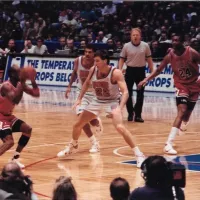
Basketball is a team sport played on a rectangular court...
The United States of America is a federal republic located...
CBS is a major American commercial broadcast television and radio...

Radar is a radiodetermination system employing radio waves to detect...
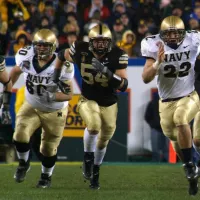
College football is a popular amateur sport in the United...
ABC News is the news division of the American television...
Trending

23 minutes ago Luke Bryan Hilariously Forgets Lyrics During Performance, Fans React Positively to the Gaffe
23 minutes ago Andy Pages shines with two home runs as Dodgers defeat Padres in wild game.
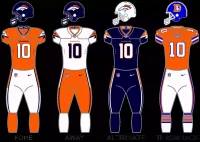
23 minutes ago Broncos Sign Mario Goodrich: UFL Cornerback Gets Another NFL Chance

23 minutes ago Zendaya's Engagement Ring Details Emerge; Azzallure Responds to Bridal Trends with New Collection
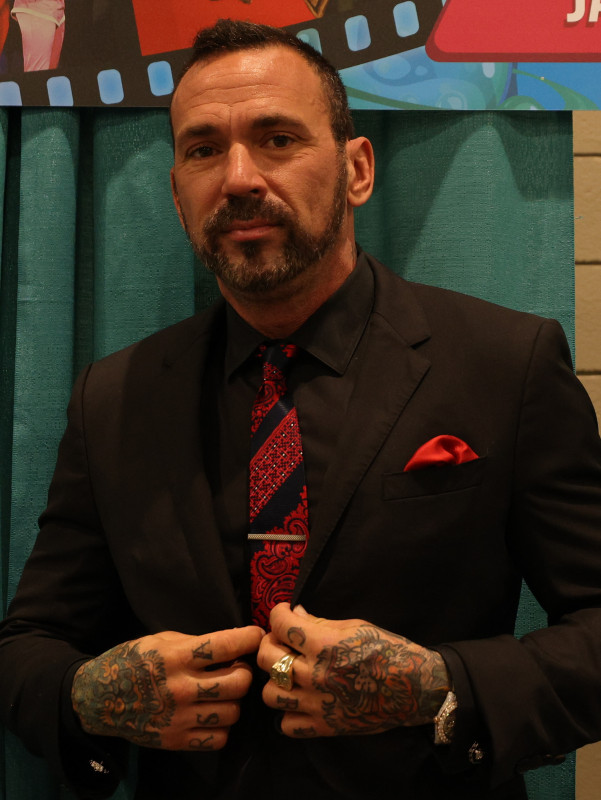
1 hour ago Amy Jo Johnson Honors Late 'Power Rangers' Costar Jason David Frank with Throwback Photo.

1 hour ago Natural Gas Prices Surge Amid Hot Weather, Middle East Tensions; Forecast Eyes $4.17
Popular
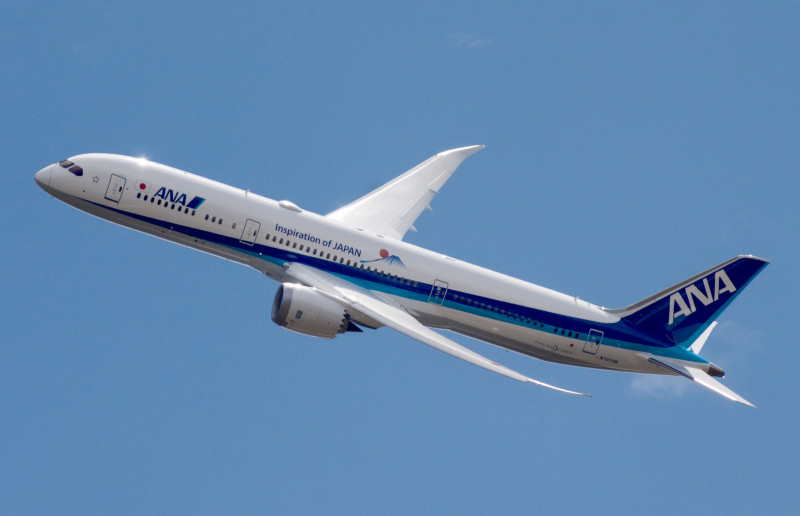
The Boeing Dreamliner is an American wide-body airliner developed by...

Greta Thunberg is a Swedish climate activist who gained international...

Cristiano Ronaldo often called CR is a Portuguese professional footballer...

Kristi Noem is an American politician and Air Force Auxiliary...

Donald John Trump is an American politician media personality and...
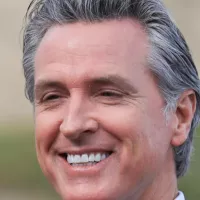
Gavin Newsom is an American politician and businessman currently serving...
